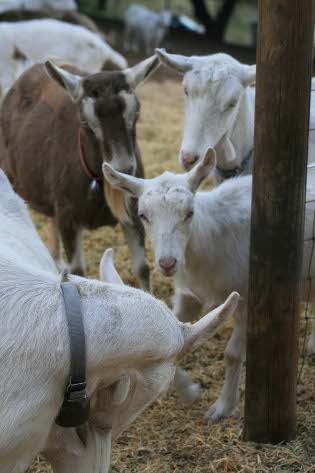Written by: Chuck Jolley — Cattle Network
Even if the gentle folk at the USDA can’t see the handwriting on the wall, the more politically astute in the House and Senate are quite capable of reading the bright red neon signage. First, Rosa DeLauro, chair of the House Ag appropriations sub committee, cut NAIS funding back to a chilly absolute zero.
The Senate originally proposed a paltry $14. 6 million — nothing more than a rounding error in the big bucks often tossed around inside the beltway – but Senators Jon Tester (D- MT) and Mike Enzi (R-WY) joined hands across the aisle and offered an amendment that slashed that number by half. If passed, NAIS funding would become an almost insignificant piece of the $23. 6 billion agricultural spending bill proposed for fiscal 2010.
Their amendment also limited use of those meager millions, slapping some serious handcuffs on Ag Secretary Vilsack’s failed effort to gain any industry support during his early summer cross-country listening sessions. Their reasoning?Congress had spent $140 million on the program and “gotten next to nothing.”
R-CALF and the Western Organization of Resource Councils, groups representing the rabidly anti-NAIS grassroots livestock producers, stood as one and applauded the Senate action. A standing ‘O. ‘Hurrah’s from the hinterland. WORC would have broken out the proverbial six pack for a party with their R-CALF friends just down the street in Billings, MT. They’ll keep the Bud on ice until the Senate agrees with DeLauro and zeroes out all funding, though, before dancing on the patio down at Tiny’s Tavern,
WORC’s Dan Teigan thanked Senators Tester and Enzi, for “taking the lead against this expensive, intrusive, and unworkable program. The conference committee should zero out all funding for the animal identification program. You don’t just want to slow down a runaway train. You want to stop it.”
R-CALF USA President Mad Max Thornsberry issued a surprisingly calm statement. “NAIS epitomizes what government should not do: it should not impose costly and highly intrusive regulatory burdens on private industry and private citizens without first considering alternatives, without first establishing a critical public need, and without first determining the effect that a significant government mandate would have on the culture and economy of the U. S. livestock industry.”
Teigan need not worry about that runaway train. The House and Senate just tore up the tracks. Doc Thornsberry can rest assured he’s helped defend the culture and economy of the U. S. Livestock industry. The actions of the House and Senate are a survival technique learned by most politicians; when attending a listening session, just shut up and listen. Those are voters doing the talking.
Chuck Jolley is a free lance writer, based in Kansas City, who covers a wide range of ag industry topics for Cattlenetwork. com and Agnetwork. com.





 Mr. Hentges is a 1992 graduate of the University of Texas with a juris doctorate from the School of Law and a Master of Public Affairs from the Lyndon B. Johnson School of Public Affairs. He is a 1987 graduate of Oklahoma State University with a bachelor of science in agricultural economics.
Mr. Hentges is a 1992 graduate of the University of Texas with a juris doctorate from the School of Law and a Master of Public Affairs from the Lyndon B. Johnson School of Public Affairs. He is a 1987 graduate of Oklahoma State University with a bachelor of science in agricultural economics. “The first thing they did when they got the authority to write rules… was to grant themselves the authority to conduct warrantless searches. Wisconsin is in the process of coercing farmers and backyard producers … into NAIS, and the accompanying Premises ID program, by threatening to withhold any of the licenses they control.” Paul Griepentrog
“The first thing they did when they got the authority to write rules… was to grant themselves the authority to conduct warrantless searches. Wisconsin is in the process of coercing farmers and backyard producers … into NAIS, and the accompanying Premises ID program, by threatening to withhold any of the licenses they control.” Paul Griepentrog Although there is a bill in Wisconsin which would restore voluntary participation I feel it is nothing more than an attempt at political redemption by the same people who passed the mandatory bill to begin with, in that they are fully aware that this bills will be sent to the House Ag committee and never see the light of day. This is merely political posturing…. The house, senate and government are all controlled by Democrats. This may be nothing more than a smoke screen while they make mandatory phase II which is the tagging and chipping, which can’t be done unless you have a Premises ID.
Although there is a bill in Wisconsin which would restore voluntary participation I feel it is nothing more than an attempt at political redemption by the same people who passed the mandatory bill to begin with, in that they are fully aware that this bills will be sent to the House Ag committee and never see the light of day. This is merely political posturing…. The house, senate and government are all controlled by Democrats. This may be nothing more than a smoke screen while they make mandatory phase II which is the tagging and chipping, which can’t be done unless you have a Premises ID.